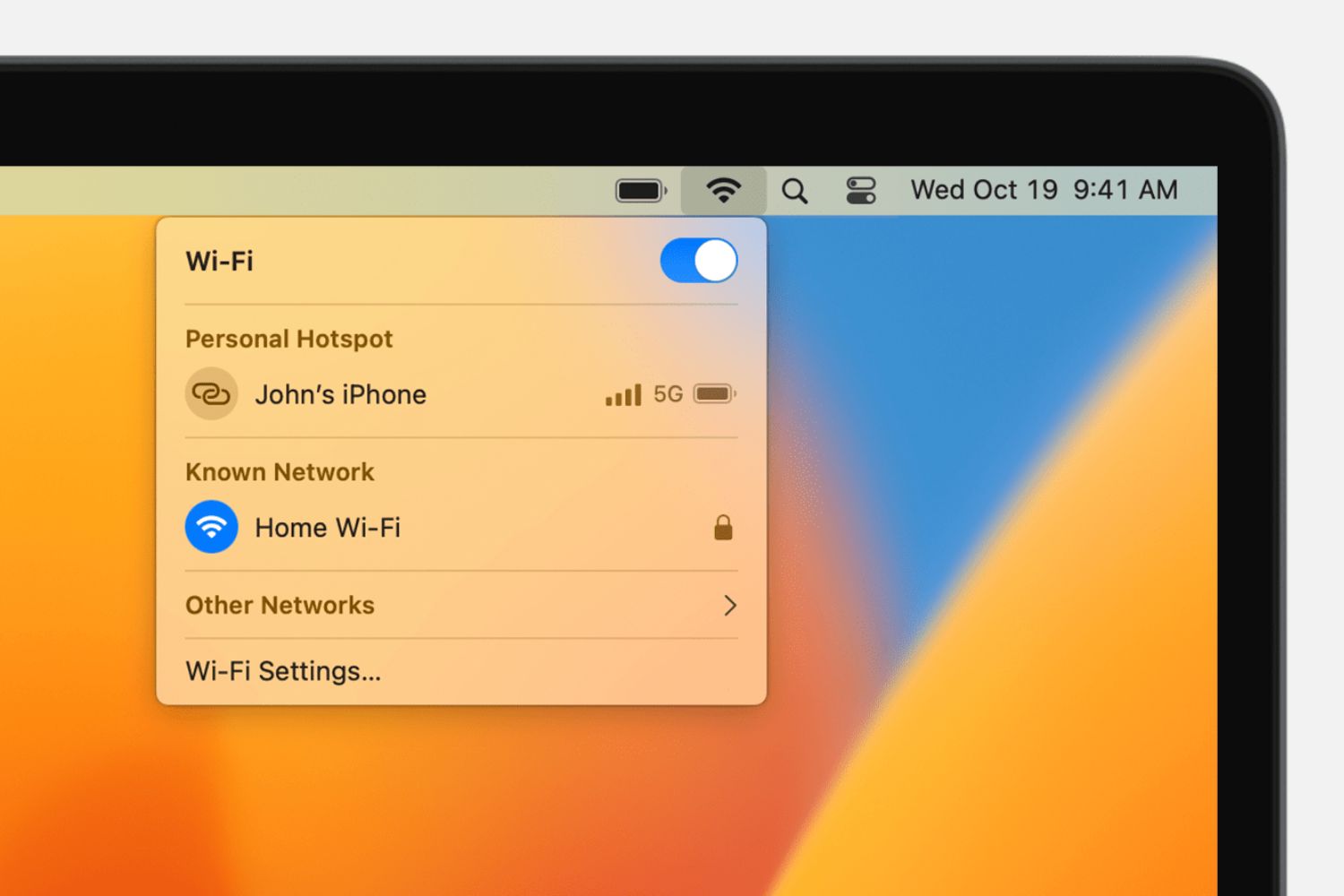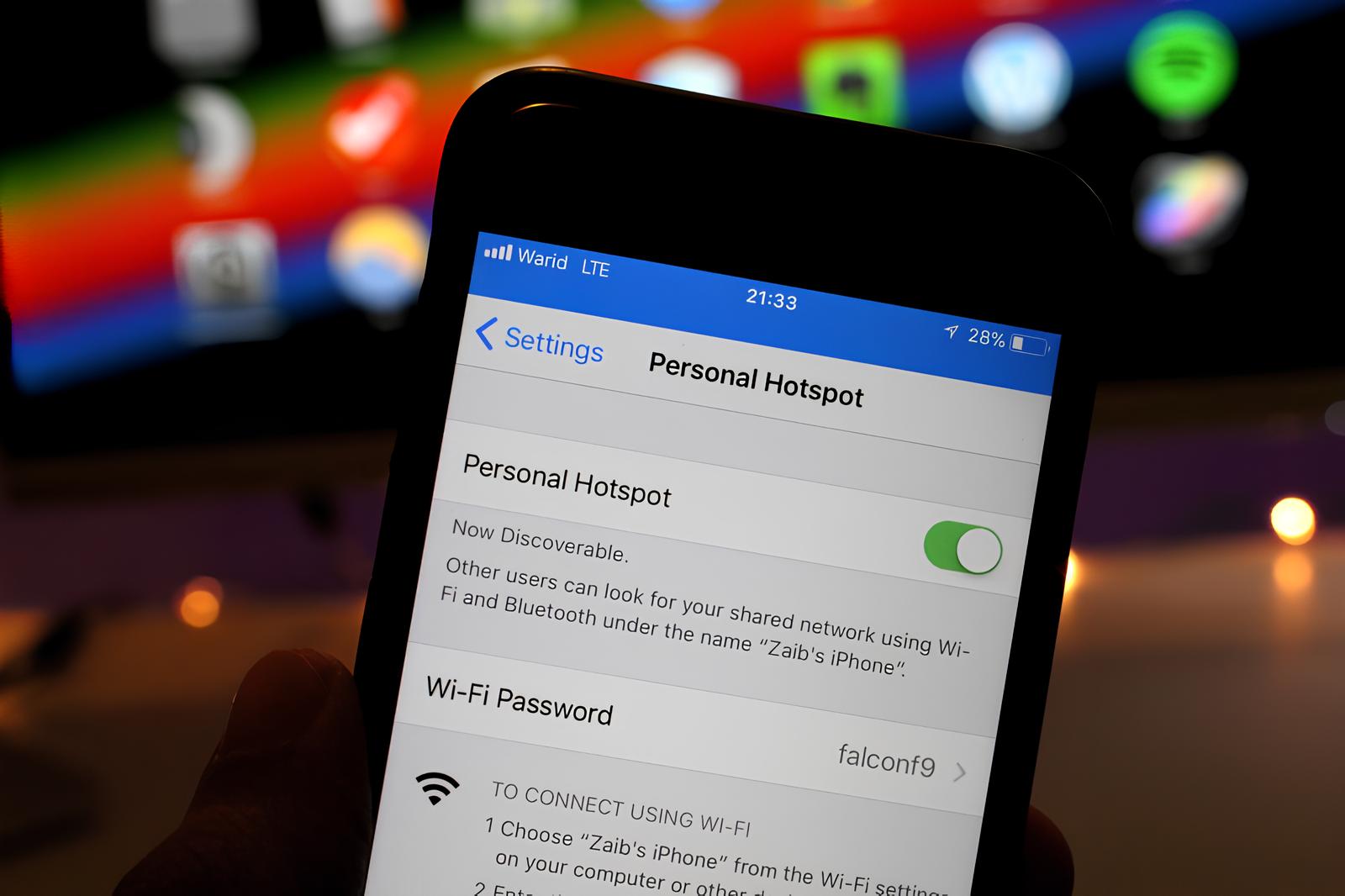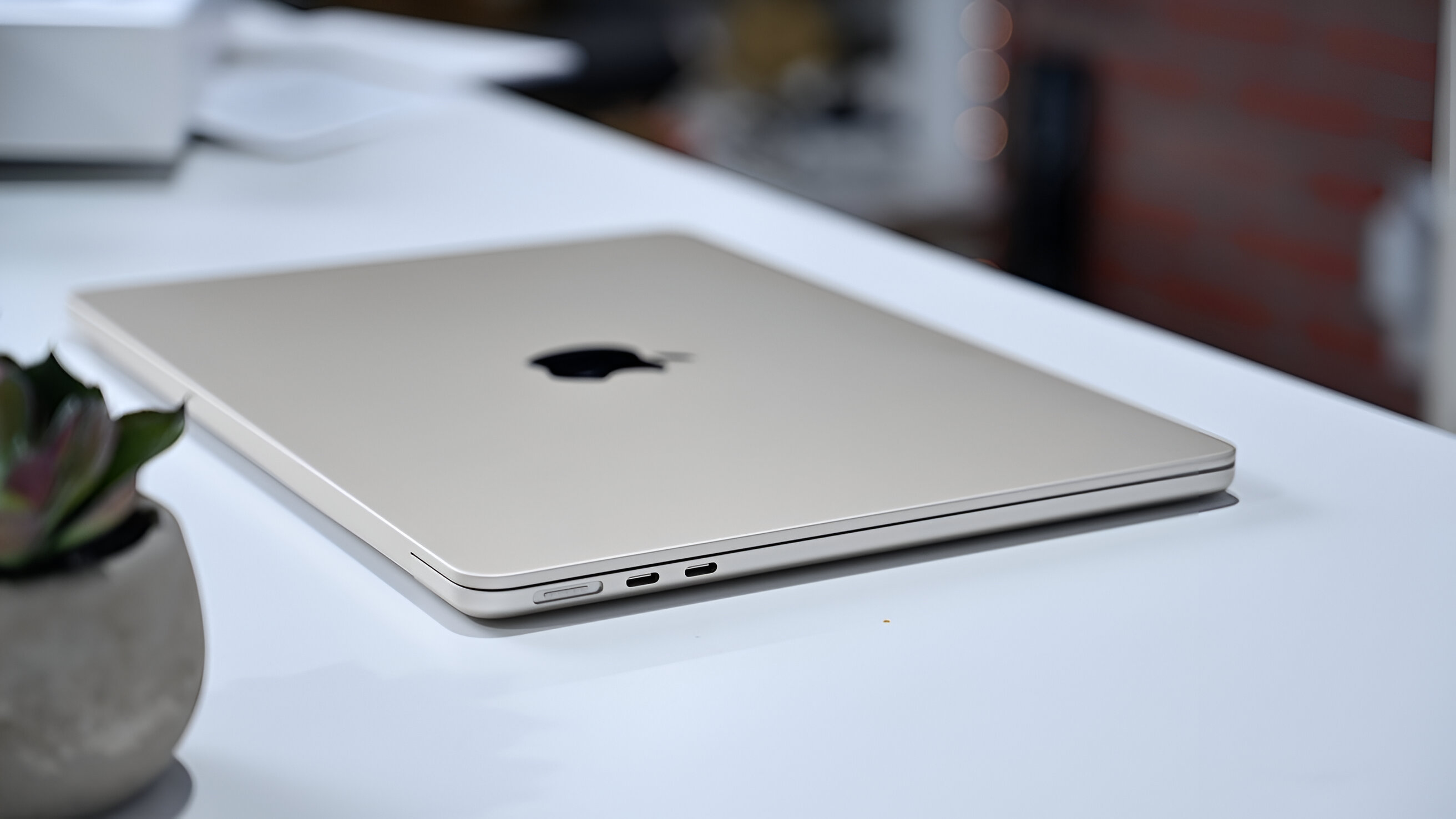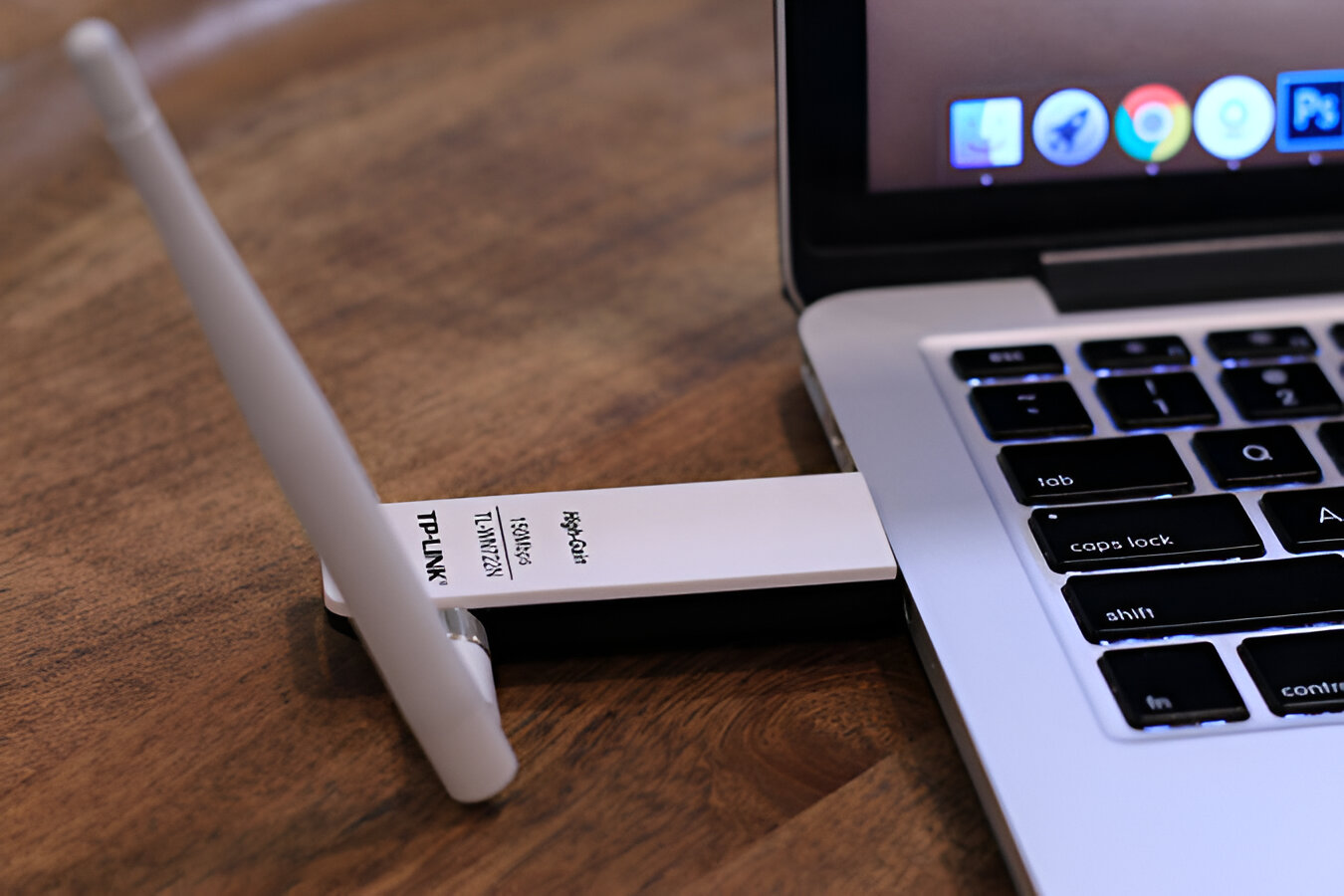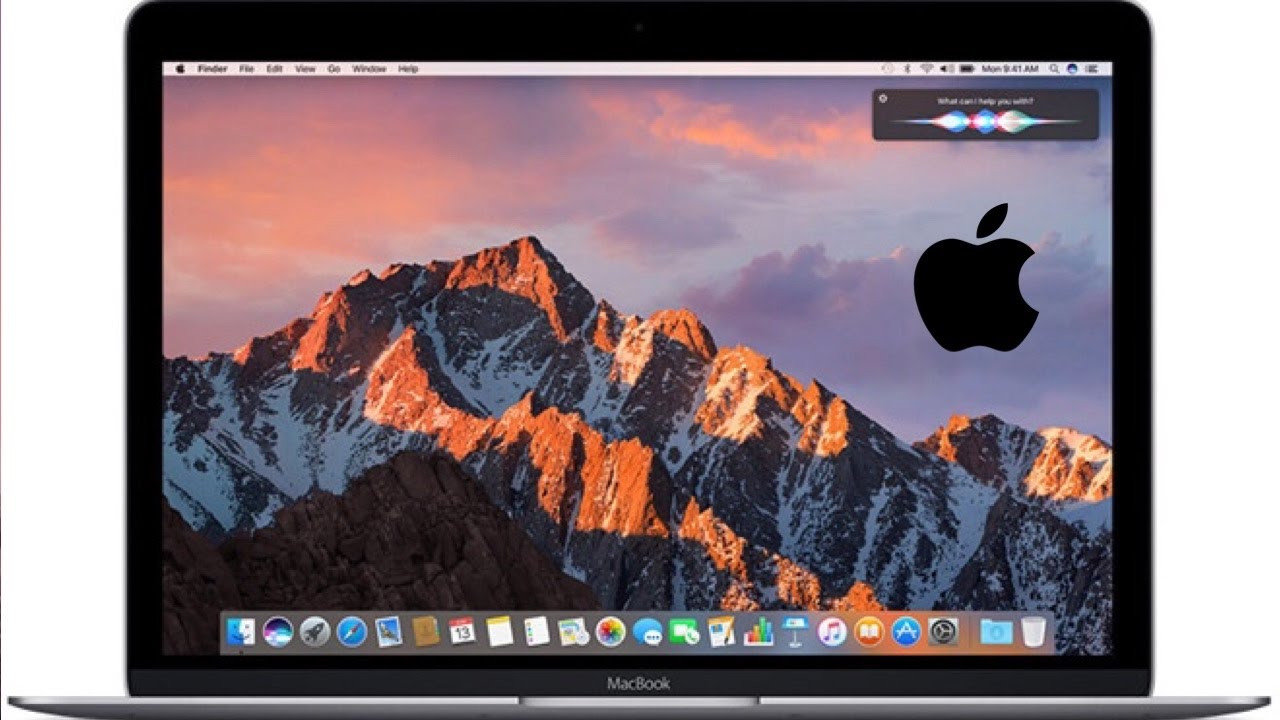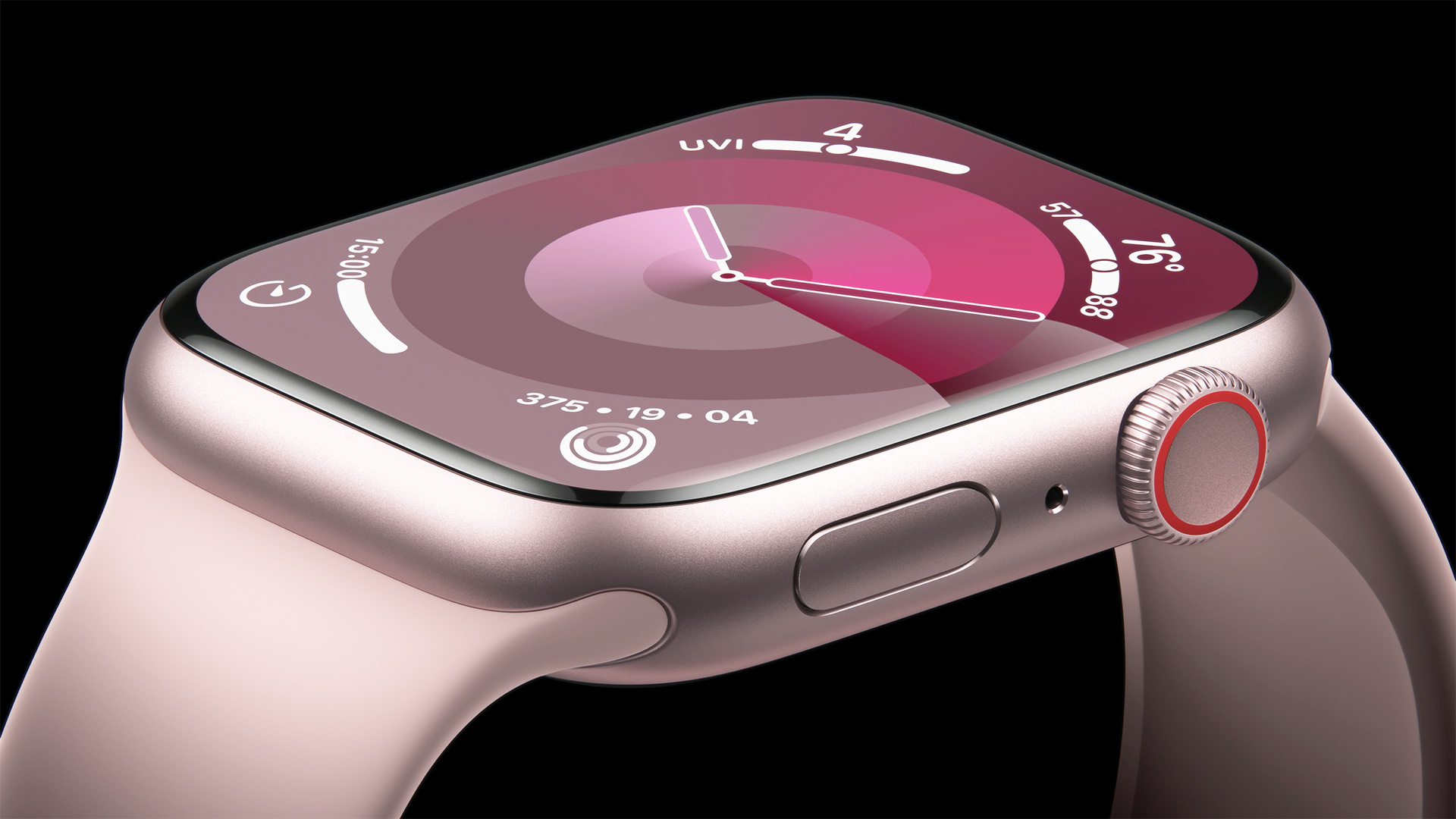Checking Wi-Fi Availability on MacBook
Before attempting to connect your MacBook to a hotspot, it's essential to ensure that the Wi-Fi feature on your device is functioning properly. Here's a step-by-step guide to checking Wi-Fi availability on your MacBook:
-
Check Wi-Fi Icon: Look at the top-right corner of your MacBook's screen for the Wi-Fi icon. It appears as a series of concentric curves, resembling a radar signal. If the icon is visible, your MacBook is detecting nearby Wi-Fi networks.
-
Click on the Wi-Fi Icon: Click on the Wi-Fi icon to view the available Wi-Fi networks in your vicinity. A dropdown menu will display a list of detected networks, including any available hotspots.
-
Signal Strength: Assess the signal strength of the available networks. The number of curved lines or bars next to each network indicates the strength of the signal. A stronger signal is represented by more bars, while a weaker signal is depicted with fewer bars.
-
Network Name: Verify that the hotspot you intend to connect to is listed in the available networks. The network name, also known as the SSID, should be clearly visible in the dropdown menu.
-
Connectivity Status: If you have previously connected to a Wi-Fi network, your MacBook may automatically attempt to reconnect. Check the connectivity status to determine if your MacBook is currently connected to a network.
By following these steps, you can effectively verify the Wi-Fi availability on your MacBook. This preliminary check ensures that your device is ready to connect to a hotspot, allowing for a seamless and hassle-free connection process.
Remember, a stable Wi-Fi connection is crucial for a smooth online experience, whether you're browsing the web, streaming content, or engaging in remote work. Therefore, it's essential to confirm the availability of Wi-Fi on your MacBook before proceeding to connect to a hotspot.
Turning on Hotspot on Mobile Device
Enabling a mobile hotspot allows you to share your mobile data connection with other devices, such as your MacBook, providing a convenient solution for accessing the internet when traditional Wi-Fi networks are unavailable. The process of activating a hotspot varies slightly depending on the operating system of your mobile device, but the fundamental steps remain consistent across most platforms.
iOS Devices (iPhone or iPad)
If you own an iPhone or iPad, the steps to activate the hotspot feature are straightforward. Follow these instructions to turn on the hotspot on your iOS device:
-
Access Settings: Open the "Settings" app on your iOS device. The icon resembles a gear and is typically located on the home screen.
-
Select Personal Hotspot: Within the Settings menu, tap on "Personal Hotspot." This option allows you to configure and activate the hotspot feature.
-
Toggle Personal Hotspot On: Toggle the switch to enable the Personal Hotspot. Once activated, your device will begin broadcasting a Wi-Fi network that other devices, including your MacBook, can connect to.
-
Configure Hotspot Settings (Optional): If desired, you can customize the hotspot settings by tapping on the "Wi-Fi Password" option. This allows you to set a unique password for the hotspot network, enhancing its security.
Android Devices
For Android devices, the process of turning on the hotspot may vary slightly based on the device manufacturer and the version of the operating system. However, the general steps to activate the hotspot feature on an Android device are as follows:
-
Access Settings: Open the "Settings" app on your Android device. The appearance and location of the Settings app may differ based on the device model and software version.
-
Navigate to Network & Internet: Within the Settings menu, locate and select "Network & Internet" or a similar option related to connectivity settings.
-
Tethering & Portable Hotspot: Tap on "Tethering & Portable Hotspot" or a similar option, depending on the terminology used by your device. This menu provides access to the hotspot settings.
-
Enable Portable Wi-Fi Hotspot: Toggle the switch to activate the "Portable Wi-Fi Hotspot" or "Mobile Hotspot" feature. Once activated, your Android device will begin broadcasting a Wi-Fi network that other devices, including your MacBook, can connect to.
By following these steps, you can effectively activate the hotspot feature on your mobile device, enabling it to serve as a source of internet connectivity for your MacBook. Once the hotspot is activated, you can proceed to connect your MacBook to the mobile hotspot, facilitating seamless access to the internet from your mobile data connection.
Connecting MacBook to Hotspot
After ensuring the availability of Wi-Fi on your MacBook and activating the hotspot on your mobile device, the next step is to connect your MacBook to the hotspot. This process involves locating the hotspot network on your MacBook and establishing a secure connection to enable internet access. Here's a comprehensive guide to seamlessly connect your MacBook to a hotspot:
-
Access Wi-Fi Settings: Begin by clicking on the Wi-Fi icon located in the top-right corner of your MacBook's screen. This action opens a dropdown menu displaying the available Wi-Fi networks, including the activated hotspot from your mobile device.
-
Select the Hotspot Network: Within the dropdown menu, identify the name of the hotspot network being broadcast by your mobile device. The network name, also known as the SSID, should correspond to the hotspot you activated earlier.
-
Enter Hotspot Password (if applicable): If you configured a password for the hotspot on your mobile device, you will be prompted to enter it during the connection process. Input the correct password to authenticate and establish a secure connection to the hotspot network.
-
Wait for Connection: Once the correct password is entered, your MacBook will attempt to connect to the hotspot network. A spinning icon or loading animation may appear next to the Wi-Fi icon, indicating that your MacBook is in the process of establishing the connection.
-
Connection Confirmation: Upon successful connection, the Wi-Fi icon on your MacBook will display a filled-in version of the concentric curves, signifying a stable connection to the hotspot network. Additionally, a notification or pop-up may appear, confirming the successful establishment of the connection.
-
Verify Internet Access: Open a web browser or any internet-dependent application on your MacBook to verify that you have successfully connected to the hotspot and can access the internet. Navigate to a website or perform a simple search to confirm the functionality of the connection.
By following these steps, you can effectively connect your MacBook to a hotspot, leveraging the mobile data connection from your activated hotspot. This seamless process allows you to access the internet on your MacBook, even when traditional Wi-Fi networks are unavailable. Whether you need to work remotely, stream media, or browse the web, establishing a connection to a hotspot enables uninterrupted access to online resources.
Remember, the security and stability of the hotspot connection are essential. Always ensure that you connect to trusted and secure hotspot networks to safeguard your data and maintain a reliable internet connection on your MacBook.
Troubleshooting Connection Issues
Sometimes, despite following the standard procedures, you may encounter connectivity issues when attempting to connect your MacBook to a hotspot. These issues can be attributed to various factors, including signal interference, network congestion, or configuration discrepancies. However, with the following troubleshooting steps, you can effectively address and resolve common connection issues, ensuring a seamless and reliable internet connection on your MacBook.
1. Signal Strength Assessment
- Begin by assessing the signal strength of the hotspot network. A weak signal can impede the connection process, leading to intermittent or unstable connectivity. If the signal strength is low, consider repositioning your mobile device to improve signal reception on your MacBook.
2. Verify Hotspot Configuration
- Double-check the hotspot configuration on your mobile device. Ensure that the hotspot feature is activated and broadcasting the network. Additionally, confirm that the network name (SSID) and password, if applicable, match the details entered on your MacBook.
3. Restart Wi-Fi and Hotspot
- Restart the Wi-Fi feature on your MacBook and disable, then re-enable the hotspot on your mobile device. This simple action can reset the network settings and resolve any temporary glitches that may be affecting the connection.
4. Forget and Reconnect
- If previous connection attempts were unsuccessful, consider removing the hotspot network from the list of known networks on your MacBook. Then, reselect the hotspot network and enter the password to initiate a fresh connection attempt.
5. Update Network Drivers
- Ensure that your MacBook's network drivers are up to date. Outdated drivers can lead to compatibility issues with certain networks, hindering the connection process. Check for and install any available updates for the network drivers.
6. Diagnose Network Settings
- Utilize the network diagnostic tools on your MacBook to identify potential issues. These tools can provide insights into connectivity problems and offer suggestions for resolving them, such as renewing DHCP leases or flushing DNS caches.
7. Mobile Device Reboot
- Consider rebooting your mobile device to refresh its network settings and clear any temporary network-related issues that may be affecting the hotspot broadcast.
By implementing these troubleshooting steps, you can effectively address common connection issues when connecting your MacBook to a hotspot. These proactive measures empower you to identify and resolve connectivity challenges, ensuring a seamless and uninterrupted internet experience on your MacBook. Remember, persistence and thorough troubleshooting are key to overcoming connectivity obstacles and establishing a stable connection to the hotspot network.









